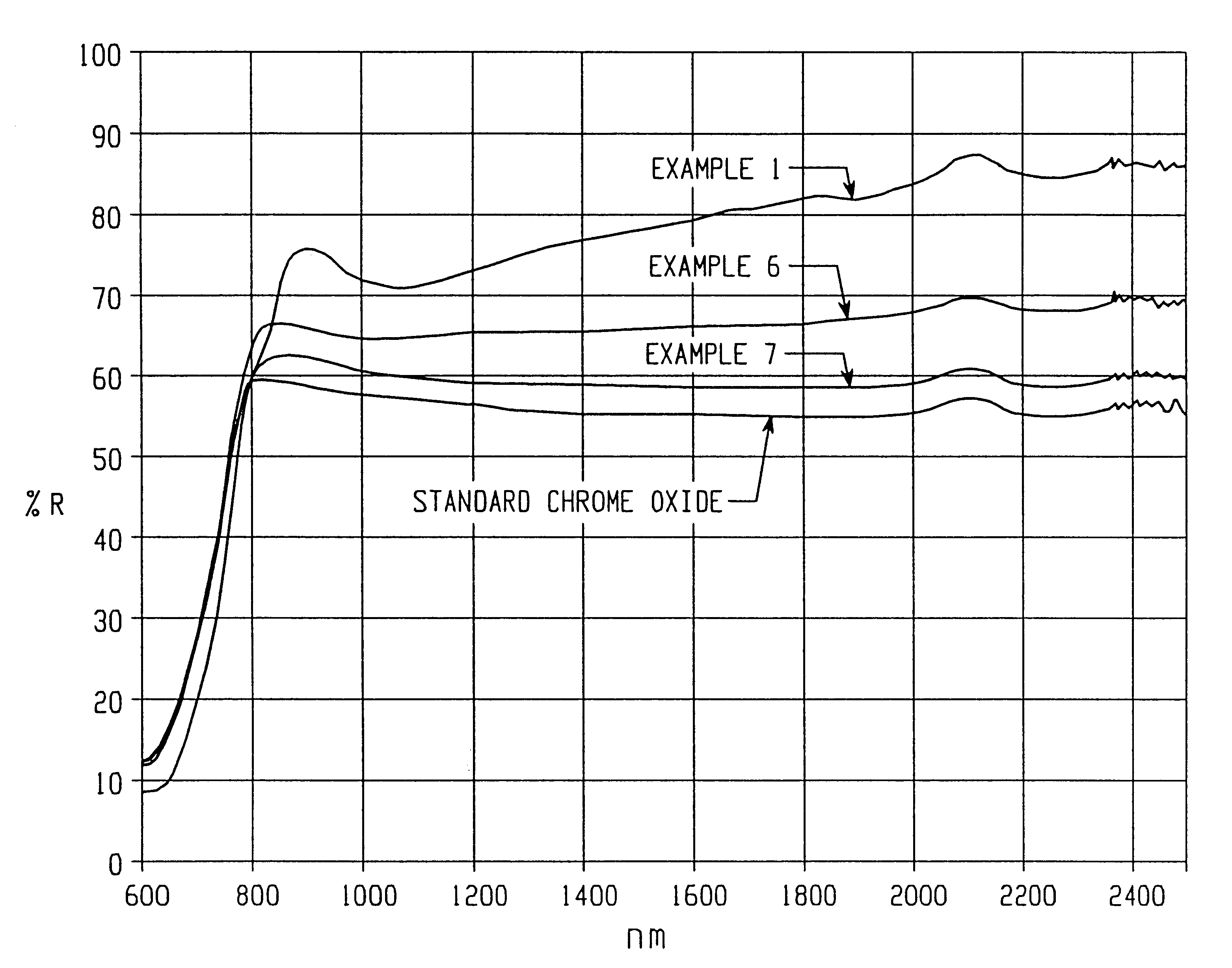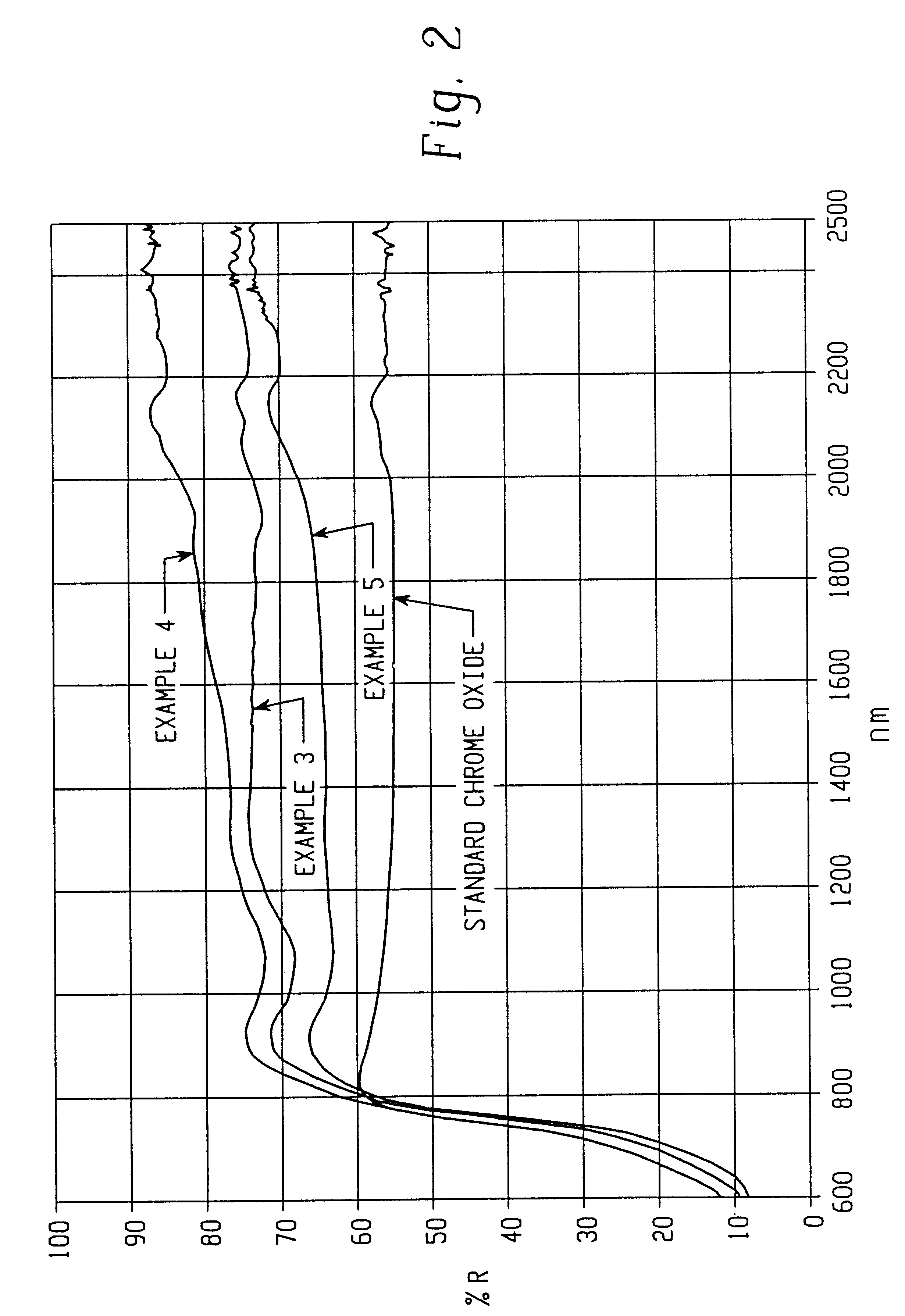Infrared reflective color pigment
a color pigment and infrared technology, applied in the field of new solid solutions, can solve the problems that pigment does not have the desired dark drab appearance in the visible spectrum required for military green shade camouflage paint applications, and achieves the effect of reducing heat build-up and reducing energy costs
- Summary
- Abstract
- Description
- Claims
- Application Information
AI Technical Summary
Benefits of technology
Problems solved by technology
Method used
Image
Examples
example 2
93.02 grams chrome oxide, 0.93 grams iron oxide, 3.35 grams aluminum oxide from aluminum hydrate and 0.83 grams titanium dioxide were thoroughly mixed in a Waring blender and calcined in a crucible at 2,000.degree. F. for three hours.
example 3
93.23 grams chrome oxide, 0.92 grams iron oxide, 0.43 grams molybdenum trioxide (basic chemical formula: MoO.sub.3), 3.11 grams aluminum oxide from aluminum hydrate and 0.57 grams titanium dioxide were thoroughly mixed in a Waring blender and calcined in a crucible at 2,000.degree. F. for three hours.
example 4
95.49 grams chrome oxide, 0.96 grams iron oxide, 1.63 grams boron oxide (basic chemical formula: B.sub.2 O.sub.3) and 1.92 grams titanium dioxide were thoroughly mixed in a Waring blender and calcined in a crucible at 2,000.degree. F. for three hours.
PUM
| Property | Measurement | Unit |
|---|---|---|
| reflectance | aaaaa | aaaaa |
| reflectance | aaaaa | aaaaa |
| wavelength | aaaaa | aaaaa |
Abstract
Description
Claims
Application Information
 Login to View More
Login to View More - R&D
- Intellectual Property
- Life Sciences
- Materials
- Tech Scout
- Unparalleled Data Quality
- Higher Quality Content
- 60% Fewer Hallucinations
Browse by: Latest US Patents, China's latest patents, Technical Efficacy Thesaurus, Application Domain, Technology Topic, Popular Technical Reports.
© 2025 PatSnap. All rights reserved.Legal|Privacy policy|Modern Slavery Act Transparency Statement|Sitemap|About US| Contact US: help@patsnap.com



